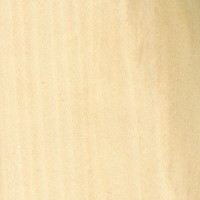 |
Common Name(s): Poplar, Tulip Poplar, Yellow Poplar Scientific Name: Liriodendron tulipifera Distribution: Eastern United States Tree Size: 130-160 ft (40-50 m) tall, 6-8 ft (1.8-2.5 m) trunk diameter Average Dried Weight: 29 lbs/ft3 (455 kg/m3) Specific Gravity (Basic, 12% MC): .40, .46 Janka Hardness: 540 lbf (2,400 N) Modulus of Rupture: 10,100 lbf/in2 (69.7 MPa) Elastic Modulus: 1,580,000 lbf/in2 (10.90 GPa) Crushing Strength: 5,540 lbf/in2 (38.2 MPa) Shrinkage: Radial: 4.6%, Tangential: 8.2%, Volumetric: 12.7%, T/R Ratio: 1.8 |
Color/Appearance: Heartwood is light cream to yellowish brown, with occasional streaks of gray or green. Sapwood is pale yellow to white, not always clearly demarcated from the heartwood. Can also be seen in mineral stained colors ranging from dark purple to red, green, or yellow, sometimes referred to as Rainbow Poplar. Colors tend to darken upon exposure to light.
Grain/Texture: Poplar typically has a straight, uniform grain, with a medium texture. Low natural luster.
Endgrain: Diffuse-porous; small pores in no specific arrangement, numerous; solitary and radial multiples of 2-3; tyloses occasionally present; growth rings distinct due to marginal parenchyma and noded rays; rays not visible without lens; parenchyma banded (marginal).
Rot Resistance: Heartwood is rated as being moderately durable to non-durable; susceptible to insect attack.
Workability: Very easy to work in almost all regards, one of Poplar’s only downsides is its softness. Due to its low density, Poplar can sometimes leave fuzzy surfaces and edges: especially during shaping or sanding. Sanding to finer grits of sandpaper may be necessary to obtain a smooth surface.
Odor: No characteristic odor.
Allergies/Toxicity: Although severe reactions are quite uncommon, Poplar has been reported as an irritant; usually most common reactions simply include eye, skin, and respiratory irritation, as well as asthma-like symptoms. See the articles Wood Allergies and Toxicity and Wood Dust Safety for more information.
Pricing/Availability: Among the most economical and inexpensive of all domestic hardwoods. Poplar should be affordably priced, especially in the Eastern United States where it naturally grows.
Sustainability: This wood species is not listed in the CITES Appendices or on the IUCN Red List of Threatened Species.
Common Uses: Seldom used for its appearance, (except in the case of Rainbow Poplar), Poplar is a utility wood in nearly every sense. It’s used for pallets, crates, upholstered furniture frames, paper (pulpwood), and plywood. Poplar veneer is also used for a variety of applications: either dyed in various colors, or on hidden undersides of veneered panels to counteract the pull of the glue on an exposed side that has been veneered with another, more decorative wood species.
Comments: Poplar is one of the most common utility hardwoods in the United States. Though the wood is commonly referred to simply as “Poplar,” it is technically not in the Populus genus itself, (the genus also includes many species of Cottonwood and Aspen), but is instead in the Liriodendron genus, which is Latin for “lily tree.” The flowers of this tree look similar to tulips, hence the common alternate name: Tulip Poplar.
None available.
Scans/Pictures: A special thanks to Steve Earis for providing the veneer sample (burl) and turned photo of this wood species.


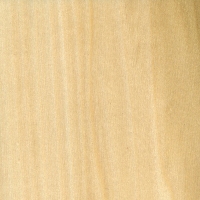
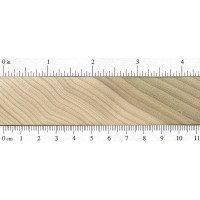
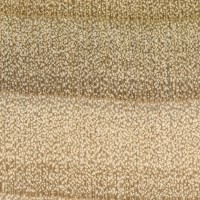
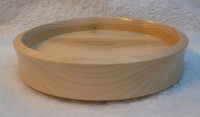
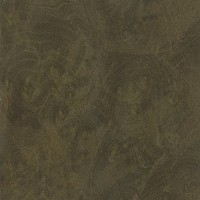
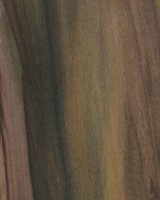
My veneer dealer sells various dyed veneers they call “tulipier.” While the Wood Database doesn’t list this term, a little hunting on the Internet reveals that this is what “yellow poplar” or Liriodendron tulipifera is often called in Europe.
I’m curious how retentive poplar is of it green color. I’ve seen articles on how to get rid of the green, but I want the green! Most often I use colorless finishes. I prefer to let the wood speak for itself. Zebra wood sanded with 600-800 grit with a colorless finish can be very amazing.
Even working with leather, I can be hesitant to use paints and dyes unless I’m trying for a specific design or finish.
Can I build a shed out of it?
Note that FPL tech bulletin No. 1267 says that they found 58% of pieces of Yellow Poplar were steam bendable. This is fairly high, so I would call it steam-bendable.
https://www.wood-database.com/machinability-of-domestic-hardwoods/
Has anyone encountered this issue before? My bed frame is made of poplar wood, but I was very surprised to find a very unpleasant odor when I received it. I asked the manufacturer, and they said it’s normal, but the literature I found online says it should be odorless. I would like to ask if anyone has had a similar experience. I’m concerned it might be due to the addition of chemicals. Thank you, everyone.
I am guessing that you are talking about tulip poplar (which is called a poplar but is not) I have milled some and used it to panel walls. I haven’t noticed any oder from that after drying. But though it isn’t great for firewood- burns too quick-I use pieces that I can’t use for lumber to start fires in the wood stove and do burn some also. There and when I’m cutting it, I do notice a kind of sharp smell. Maybe it has something to do with moisture content. But I was surprised when I read it has no… Read more »
I have refinished a table of solid rainbow poplar from the early 1960. In sanding the surface I found no order, This may be due to the age of the wood. But the color is great!
A good friend of mine had a long stand of poplar that he would use for lumber. He found that his best results came if he cut down the trees and then waited two years before he milled them. If he used them right away, they would twist, but aging them helped a lot. He would cut down the trees, then trim all but one sucker growth and then in another eight years, he would be able to cut down another tree for lumber. So with careful planning and storage, he always had a good supply of nice lumber.
I have poplar trees coming out of my ears on my property. A couple are down and I’ve been cutting them up. 18″ trunks and around 75′. This article is making me consider getting some boards from the wood. I had originally thought it would be too soft or weak to be worth it. I also saw some purple, so maybe it will have a nice look.
Thanks for all the great info here. I trust the old timers better than anything, even if some must be taken with a grain of salt :)
Hello. Does anyone happen to know the average weight per cubic ft of green yellow poplar lumber?
60-65 lbs per cubic foot of log with bark. If logs are large that would likely slightly lower the weight per cubic.
any thoughts on using T&G yellow poplar for interior walls in a sauna. ive read about benches and other accessories used in sauna construction, just not the wall material. sauna will be subject to heat and humidity while in use but it is an outdoor sauna with full sun year round and windows for air circulation.
Seems like it could be tricky with tongue and groove depending on how you install it and at what humidity level. You could very easily get some buckling when the sauna is in use if expansion is not accounted for.
If anyone has advice or experience with tonal wood choice, I’d love your input!
Currently researching local woods available on my property (in PA) to use as the soundboard for a harp I’m building. Sitka Spruce is a popular choice but is not available to me. Yellow poplar has almost identical strength/hardness figures and is much more available to me, so hopefully makes a great sounding instrument. Also considering Eastern Red Cedar, but the grain of quarter sawn yellow poplar is so straight and looks similar to Western Red Cedar; another popular tone wood NOT available to me.
Noble & Cooley use it for beautiful sounding drum shells.
Yellow poplar is used in alot if not most budget electric guitars/basses. From what I hear it is superior to basswood for that purpose. But for acoustical sound boards, I’m not sure. However I have seen Eastern Red Cedar in classical guitars that are good quality.
Quartersawn tulip poplar is a very good tonewood, having roughly the same stiffness (modulus of elasticity) as Sitka spruce and much higher stiffness than Western red-cedar. But it’s a bit heavier so at equal thickness as spruce, tulip poplar is going to give slightly a lower pitch. It can be prone to splitting but so can spruce. It can vary a lot in density but so can spruce. It’s pretty much equal to basswood which is also a good tonewood, but doesn’t get that funky basswood smell as it ages. Eastern red-cedar is iffy as a tone wood because its… Read more »
Presently building a project with Poplar and most of my lumber has twisted. Thinking about building a large steam chamber to untwist them. Is there an easier way? I have clamped them at room temp with wedges to counter the twist with little success. Thanks very much for your attention.
Hello Michael. I am sure that my response is late for you, given your post date. I am also using poplar for a project and like you and also am experiencing problems with twisting. I thought that it was the different conditions in my shop vs the lumber store. So I purchased a large slab, 3 inches thick, and milled two 1/2 inch boards first to see if they would also twist by the next day. To my frustration, they did. With the knowledge that shellac is a natural product which, seals well and sands down beautifully before gluing, staining,… Read more »
I appreciate your reply. I will try this.
Hi, I am planning to build a loft bed frame with poplar with 4 legs out of poplar. Is 3.25″ * 3.25″ legs strong enough for an adult?
Thank you very much.
Hi Kai, since no experts have responded I will respond with a history of failed projects. I give only my age as proof of experience. 66. I think 4 poplar posts 3,25″ square would hold up a car. In the vertical compression form of stress the wood is plenty strong. Be aware that any screws that you use on poplar will not hold as well as screws in oak. Use longer, thicker, more screws. Consider mortise and tenon joints.
The majority of log cabins the pioneers built were out of poplar logs. With that, the cabins were built using green logs. Many still standing with logs that are still healthy. Spare me the nonsense of poplar not holding up.
Absolutely, I have built numerous houses, cabins, barns, garages, and etc out of YP boards. I also have a 200 year old American Chestnut log cabin that had YP boards used extensively in the trusses, flooring, and the Jenny Linn style shed hanging off the side and at some point the logs had YP siding attached that weathered beautifully. All this debate about YP not being useful for building is nonsense and encouraged by the SPF industry. Some of the most beautiful and tough flooring I have is the YP T&G boards I installed in my personal wood shop floor.… Read more »
In the market, I see, there are snare drums made from Tulip. Are these actually just poplar, yet they market it as Tulip to sound exotic? I also see drum companies charging high end prices for Tulip drums. If this is actually poplar, then they are gaslighting, because poplar drumsets are everywhere. Also, Ochroma wood is starting to be a “thing” in the drum shell manufacturing process. Isn’t Ochroma just a fancy name for Balsa wood??? Thank you for your time and insight.
This sort of naming “flexibility” is very common in almost all commercial sectors that sell wood products. The worst is probably hardwood floors, but I wouldn’t be surprised to see it with drums too. Actually, this is the second time just today that I’ve run into something like this, and that gives me an idea for an article…
I will look forward to the article! Thank you for all your knowledge, searching, and insight.
Naming flexibility, as you coined it, is rampant in many sectors of commerce. I’m thinking of fish and plants and just about any textile. Caveat emptor! And thanks for your comment.
Would this wood be hard enough to build a desk out of it?
Yes. provided you design and frame the desk with proper support structure.
Can you use this for cutting boards?
Generally too soft for a cutting board.
I wouldn’t. You could but It’s the softest of hardwoods. Cut lines will show easy. Use Maple and finish with Tung oil.
Do not use tung oil if food is going to on it. Tung oil is toxic. You are better off using food grade mineral oil or something like walrus oil.
You are incorrect. Tung oil is absolutely food safe unless it is polymerized tung oil.
would this be alright to build a boat with
Yes and no. According to Robb White who lived in Georgia. (Robb White Boats) Robb designed and built a number of very nice small craft using yellow poplar with good results. Other people in other places have not had good luck with poplar’s rot resistance. It is hard to say whether the durability varies regionally, which has been documented with other woods or Robb was a good builder who took excellent care of his boats. One could point out that pine has been used successfully for thousands of years in spite of it’s relatively poor durability. Cutting boards: I have… Read more »
Can this wood be used to build stringed instruments?
It already is. Drums (Ludwig) and guitars (Gibson) for sure. Probably many others too. It’s the most common modern center laminate in the maple plywood used for arch-topped instruments like violins, basses, etc…hollow body electric guitars and hollow basses.
Can this be used for walk in humidor shelves
I’m looking at it for the same purpose. Inside a humidor for shelves.
i would like to know if it can withstand extreme humidity fluctuations . I need to make furniture which is going to the Okavango Delta in Botswana
Can I cut and use it for 2×6 and 2×4 board to build with
I built a 28×40 barn using poplar 2x4x10′ studs.
Used trusses for roof. That was 30 years ago and has not given any structural problems to date.
Can you use poplar for tread boards on a staircase
Yes. I have done many treads in Poplar
Is this an acceptable material for a bathroom vanity that will be exposed to water and humidity?
I wouldn’t use it for the countertop but for the cabinet it’d be fine.
an 8 ft diameter poplar would be awesome to see or a 6. Has anyone ever seen one? Much less use those measurements to describe a poplar in general.
A walk through Joyce Kilmer Memorial Forest is a journey back in time through a magnificent forest with towering trees as old as 450 years. Some enormous tulip-poplars are more than 20 feet in circumference and stand 100 feet tall.
https://www.fs.usda.gov › …PDF
joyce kilmer memorial forest – Forest Service – USDA
In 1976 I cut a 6 foot DBH Yellow Poplar, the biggest tree I have ever cut. I stepped it off as 140 feet laying on the ground but possibly taller because it exploded on impact. It was located on the Evansdale area of Morgantown WV. The landowner was afraid of it and I would not have touched it had I not had a path to direct fell it. The most memorable thing was that I felled it with my climbing saw a Homelite Super2 with a 12″ bar, I still have the saw and it still runs and cuts… Read more »
I have one about 8 feet in diameter in in my small backyard. Sometimes scared it will come down on the house or garage in a bad storm. I can’t imagine how much a tree service will charge to take down that monster.
This weekend, I picked up an amazing 2″ thick slab of Rainbow Poplar for my live-edge kitchen countertop! Moistened, the grain is STUNNING, sporting a “tiger-eye” chatoyancy with lots off little shiny “monkey faces”… but dried out, the chatoyancy is dulled a bit.
QUESTION (or two): How do you suggest I pretreat or prestain the wood to make the rainbow chatoyancy PUNCH best? Or will it punch and shine naturally with a coat or two of clear epoxy? One or two seal coats, and how many flood coats?
I’m open to ideas that highlight the natural grain, not hide it!
I like to use boiled linseed oil for it’s simplicity for this purpose, but there’s a lot of ways to do it. I wouldn’t just leave it up to the epoxy. There’s also “natural” color stain that seems to work pretty close to linseed oil in terms of coloration too.
You might very well get the results you want with an epoxy by itself. I use epoxy (Z-Poxy) as a grain filler and first coat on acoustic guitars, primarily because it enhances the color and chatoyance of the woods. Epoxy ‘wets’ the wood and really makes it pop. Try a sample and see how it looks!
General Finishes Arm R Seal. Technically it’s a wipe on vanish. It’s and oil mixed with a polyurethane. It’s truly one of the best Finishes I’ve ever seen.
I’ve tried linseed oil and polyurethane and eventually the colors fade to browns and blacks. I’m now trying Nano Poly – hopefully to seal in the wonderful greens and purples and reds.. I have experiments about a year old with other types of wood using Nano poly and it really does seal the wood and not sit on the wood surface
You might consider Watco Oil finish in natural (no pigment). It is an oil finish that has a bit of polyurethane in it. If you don’t mind re-applying oil once in a while, you can go the route of many of the craft furniture makers of the 50’s/60’s/70’s like Art Carpenter [Espinet] and do a couple of very wet coats of ½ and ½ boiled linseed oil and turpentine, letting them really soak in, rub down with 4/0 steel wool, and a couple coats of linseed oil. Much like tung oil, the linseed oil hardens in the grain. This finish… Read more »
HOW WELL WOULD A PORCH SWING HOLD UP MADE OF POPLAR? THIS WOULD HANG FROM A FRAME NOT UNDER A ROOF.
It would not hold up well. It is too soft. White oak would be a much better choice. Also white oak stains beautifully. Lovely grain.
Use Maple. Structurally very strong.
How long does the tree take to grow? A picture of the tree would be nice.
A poplar will take about fifty years to grow to maturity. At that point, the trunk will be about 2′ in diameter. Lower branches tend to drop off naturally, so it is not unusual to find trees that are clear for 12-16′ above the root shoulder.
In Upstate SC, it’s not uncommon to find yellow poplars growing 2-3 ft taller per year.
I work in a 325 yo building. The original room of the house (ring dated to 1675) has poplar floors, confirmed by the flooring guy who refinished them a couple of years ago. They are 18″+ planks and look amazing.
I have some furniture that says is made of poplar solid wood and the paint is chipping off easily. Is this normal? Where it is flaked off, it looks like styrofoam underneath?
Poplar might be on the soft side, but it’s definitely not as soft as styrofoam! That looks very suspicious. Poplar does not have large pores, so those black lines on the side of the wood are either fake, or from a different species of wood with larger pores.
I’m building a 14×40 deck. It will be about 3’ off the ground. I would love to use black locust for the decking but don’t have the money for that now. I do have access to several poplar trees and a mill. Thoughts on using the poplar? How long should it air dry before being put to use? Thickness the boards should be cut?
Don’t. It rots. Wouldn’t use the stuff for anything but cabinetry & furniture.
I primarily use poplar to build upholstered furniture. It is not uncommon to get different densities of poplar some being heavy/hard, while some are light and soft.
I used to do the millwork for a lot of homes both supplying and finishing the millwork. I used a lot of poplar both stained and painted. It is an excellent wood to paint. It also stains quite well with wiping type stains and in appearance with the dark “cherry” stains it is a very good substitute for cherry at one third the price. Also someone mention poplar siding, while Wehave no poplar trees around here we do have cottonwood and I grew up on a farm that had the trees and a sawmill. Every building on the place except… Read more »
I used poplar from my own land for the siding on my barn, painted red or course. Despite all the warnings about how it wouldn’t last It has been doing just fine for a couple of decades now. As for looks, painted red as I mentioned, people have often stopped and complimented me on my beautiful barn, and all it cost me was a little bit at the local sawmill.to cut it into planks.
The definition of a hardwood or softwood is in the structure not whether if is soft or hard to work. All conifers are softwood by cell structure. Balsa wood is a hardwood by cell structure but is a very soft wood
it has to due with the seeds.. seeds incased in a shell ie. fruit or like an maple seed are hardwoods. Seeds without a shell ie pinecone are softwoods.. pretty simple really
I have a section of Tulip Poplar I’ve been working from for over 3 months and so far haven’t had any problems with rot or insects. And this includes exposure to high humidity. Actually, It’s likely to be rainbow poplar because the the colors that are revealed when it’s sanded and polished have a wide range. I’ve made several pieces of jewelry from it and they’ve all turned out great. It is a bit softer than other hardwoods I’ve worked with, but I’ve found that it actually makes getting particular detail and shape easier especially when using high grit sanding… Read more »
Poplar is an excellent option for artist canvas stretcher bars. It is light, very strong, straight and resistant to warping, bending and bowing. I prefer it over pine.
Tulip poplar most certainly DOES have a distinctive odor.
It has a perfume type smell when cut green.
When burned, green, it smells like burning Styrofoam.
Yes, the “odor” section indicates any scent only when the wood is fully dried. I do admit that there are a lot of woods (elm, box elder, etc.) that have strong smells when green, but these odors are almost entirely absent in the dried wood.
Ok. Gotcha.
I also have a different experience with yellow poplar. This was 90% of the wood we would use when trimming a house (baseboards,casings, door jambs). I can guarantee the poplar we use has a very distinct smell when cross cut at high speed,as in a mitre saw. This would happen more when there was heat generated by friction and a slight saw burn. The smell was almost foul, sort of like cat dung. Not extremely unpleasant, sort of a spices smell. The smell was more prominent in the dark, green, and pink streaked pieces, and almost absent in the cream… Read more »
There is an old saying about poplar: Though oak is strong and stout, keep me dry and I’ll last him out!
would this or should this be used for a baby crib, ever?
Yes it’s perfectly fine. Treat it like you would a softwood not a hardwood.
I’ve always thought the poplar was soft wood. How come it becomes hardwood now??? Hmmm
It is a hardwood, how ever it isnt a particularly “hard wood.” The distinction between and softwood is related to how the species produces seeds. In general, hardwood trees grow slowly and as a result are more hard and dense but this isnt always the case. Poplar is an example of a tree that is technically a hardwood but had density and hardness that is more typical of a softwood.
Not really sure of the statements in this article being accurate. I’m an old guy, grew up in the Southeast U.S., and we ALWAYS built our outdoors gates (as in barn doors, cattle gates, etc.) out of poplar (aka Yellow Poplar). The old ‘man tales’ said that it would last forever, as long as you ‘kept it off the ground’. I know for a fact that many of our unstained, unpainted, untreated gates lasted 40 or more years before becoming weak or failing, and were unapproached by insects when hung from Red Juniper (aka virginia juniper or Tennessee red cedar,… Read more »